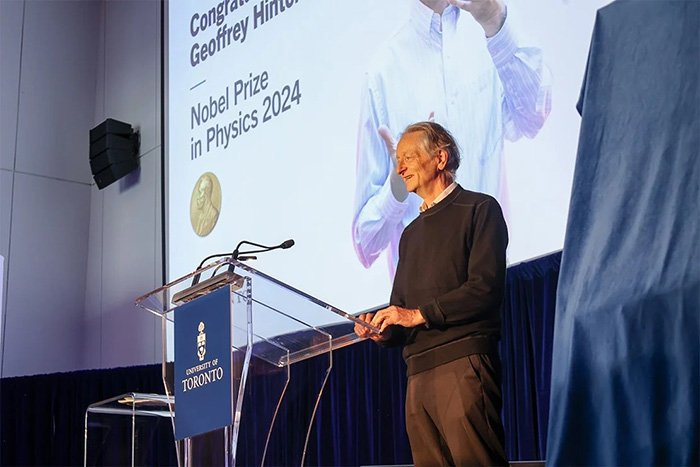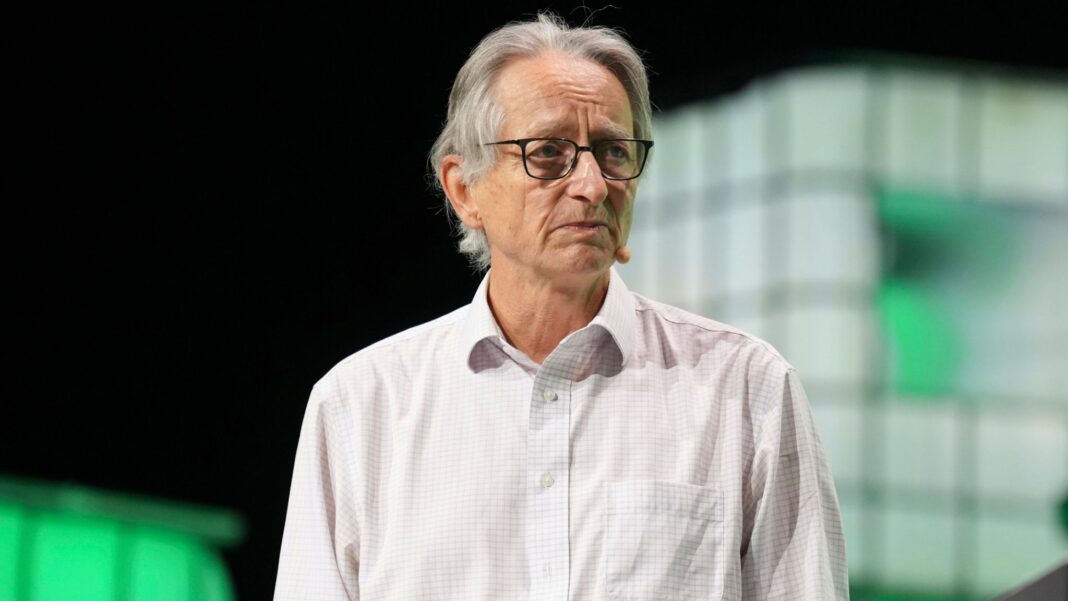Numerous AI systems rely on deep learning techniques, which renowned physicist Geoffrey Hinton developed. His research on neural networks paved the way for voice assistant answers and AI recognition. Due to his contributions to the development of artificial neural networks for machine learning, he was awarded the Nobel Prize in Physics in 2024.

Biography
Born in 1947 in London, Geoffrey Hinton has always been interested in the human brain and how it processes information. His fascination led him to pursue a Bachelor of Arts in Experimental Psychology from the University of Cambridge and a Ph.D. in artificial intelligence from the University of Edinburgh. In 2017, Hinton co-founded the Vector Institute in Toronto and is now an Emeritus Distinguished Professor at the University of Toronto.
Following his arrival in Canada in 1987, Hinton led the Neural Computation and Adaptive Perception (NCAP) program for ten years while serving as a Fellow at the Canadian Institute for Advanced Research (CIFAR). Additionally, he provided a free Coursera course on neural networks in 2012. Hinton joined the AI research team at Alphabet Inc. in 2013, and his work there significantly advanced the fields of artificial intelligence and machine learning.

Hinton raised concerns about the possible negative effects of AI, including the chance of job displacement and abuse. Because of such concerns, he decided to depart from Google in 2023 to increase awareness of the moral implications of artificial intelligence.
Why is he called the Godfather of AI?
Geoffrey Hinton is often called the Godfather of AI because he reformed the field by inspiring conventional thinking and championing a brain-inspired vision of intelligence way before it became popular.
While mainstream AI research in the mid-20th century focused on the core of human intelligence, reasoning, and logic, and constructing AI based on symbolic expressions in the head, Hinton took a radically different route. He proposed that true intelligence should be modeled on how the brain actually works. His breakthrough was simulating neural networks—digital representations of brain cells—that could learn patterns and relationships through experience, much like the human mind.
This approach, now foundational to deep learning, was seen as fringe science for 50 years due to its lack of support and the limited number of good universities with such groups. But Hinton’s conviction never wavered. Consequently, He mentored the best young students who believed in this approach, including Ilya Sutskever, who would go on to co-found OpenAI.
Major contributions to AI
Introducing deep learning
Hinton and his colleagues introduced Deep Belief Networks (DBNs) in 2006, proving that an unsupervised layer-wise method may effectively train deep neural networks. This design represents a major advancement in neural networks by allowing models to learn high-level data representations, opening the door for applications such as speech recognition and object detection.
The Google Brain Project
Hinton’s 2012 project, Google Brain, developed a neural network for identifying objects in YouTube videos. This led to his recruitment by Google, which accelerated deep learning adoption in Google products like Google Photos, voice recognition, and natural language understanding. Hinton’s role at Google influenced AI strategies across the tech industry, bringing deep learning into large-scale commercial applications.
The Backpropagation Algorithm
Geoffrey Hinton’s backpropagation algorithm, popularized in the 1980s, revolutionized deep neural network training by allowing multiple layers to update their weights through gradient descent. This method solved computationally expensive and often failed training issues, enabling the development of networks with multiple hidden layers, a key development that enabled the current deep learning revolution.
Geofery Hinton warns about the dangers of AI
Hinton’s main mission is to warn people about the dangers of AI, stating that he was slow to understand the risks of autonomous weapon use, such that these weapons could go around deciding by themselves who to kill. He mentioned another risk as the possibility of AI becoming smarter than humans. He mentions that he was unsure how he could have foreseen this. Hinton explains that neural networks were primitive 20-30 years ago and were not as good as humans, making it difficult to predict the potential for AI to become more intelligent.

Geoffrey Hinton also addresses the dangers of widespread unemployment and predicts that technology will eventually outperform people in every way. Additionally, Hinton made the case that white-collar occupations like paralegals and contact center employees might be replaced by AI assistants.
He feels that without a job, a universal basic income would not be enough to provide people a sense of purpose. Since AI is being employed more and more in jobs that are popular with young college graduates, mass displacement is more possible than ever.




